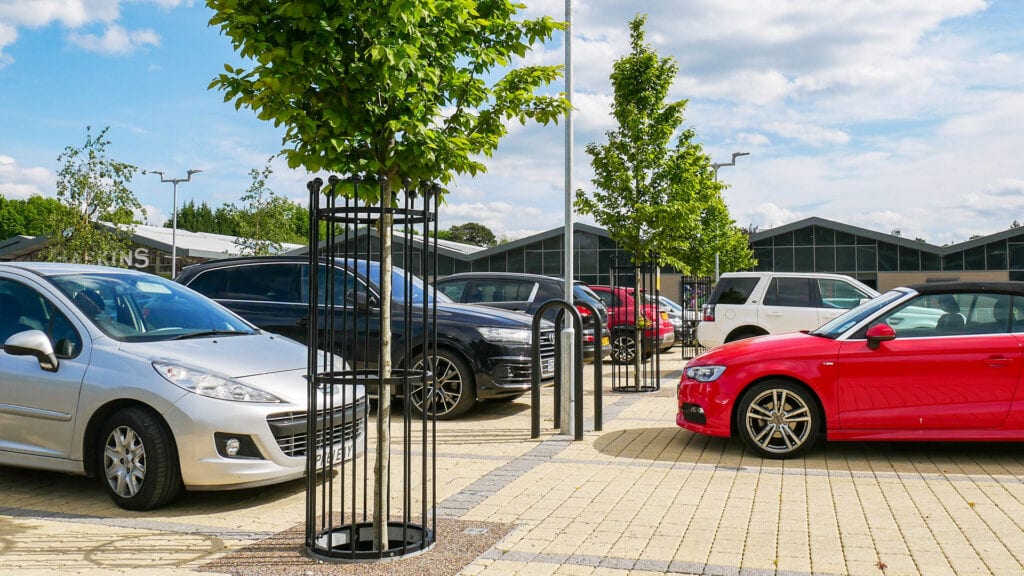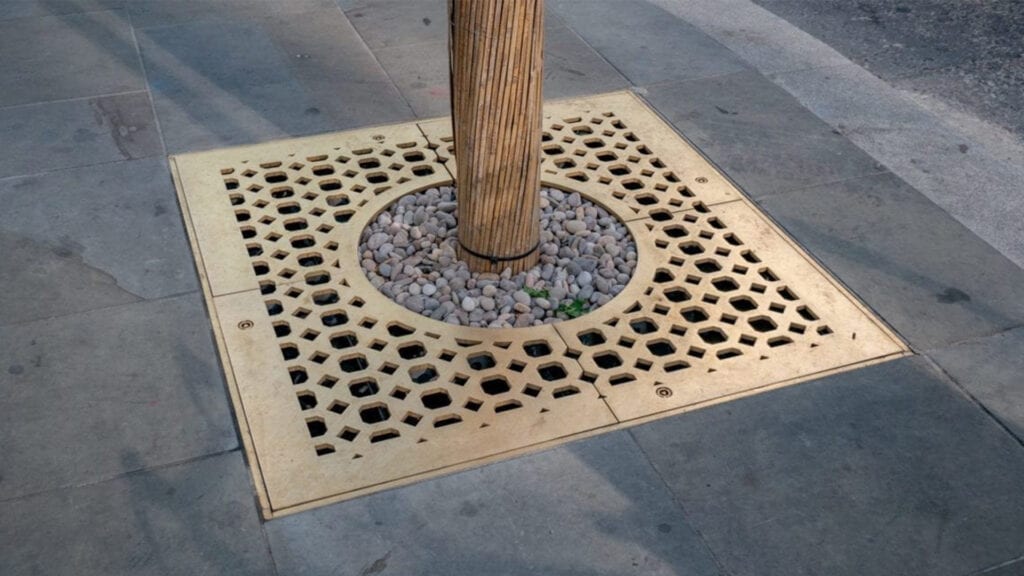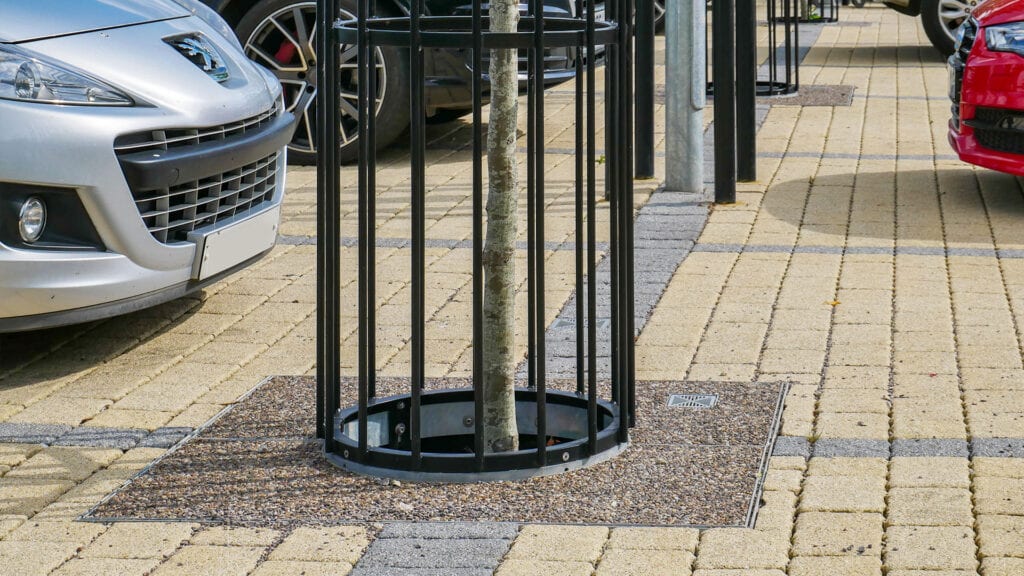In nature, young trees are supported and protected by other trees. As trees grow from a seed, their roots establish simultaneously with their leaves and stem, but when we plant a tree, whether a container-grown, a root balled or a bare root type, the root plate is reduced in size. This means that the tree needs to establish new roots before it can be said to be independent in the landscape – capable of looking after itself without needing long term maintenance.

Newly planted trees are vulnerable, and particularly in urban areas. Whilst tree planting in rural zones needs to consider possible animal damage – deer and rabbit in particularly – urban planting brings different challenges. It is necessary not only to protect the above-ground part of the tree but also the fragile new roots and the eco-system that we call soil.
This divides tree protection into two separate classes – known as grilles (or grates) protecting the underground elements and vertical guards to protect the stem or trunk. Often installed together, GreenBlue Urban’s wide range of grilles and guards provide unparalleled levels of protection to suit every situation; manufactured from the highest quality materials and available in a multitude of finishes, and available in many cases from stock, GreenBlue Urban are the first choice for many clients.

Whilst it is important to remember that any tree protection is temporary protection for a permanent tree, most forms of tree protection need to be able to withstand at least a decade of knocks. GreenBlue Urban uses the latest computer-aided design technology to ensure that all products are the strongest on the market, with many able to withstand heavy vehicle overrun, and vertical guards use an innovative angled restraint band greatly enhancing the crush strength.
Any tree grille is essentially a bridge – protecting the soil and roots from compaction, allowing water into the tree pit, and enabling gaseous exchange (essential for healthy soil). GreenBlue Urban tree grilles include an irrigation inlet for simple watering, which also operates as additional air inlet when not filled with water, assisting the roots in their battle for establishment. The style of tree grille is largely a matter of specifier choice – except where regular vehicle overrun occurs, which does require a heavier duty of material. Offering standard tree grilles manufactured from cast iron, ductile steel, permeable resin bound stone and granite setts, and bespoke options such as CorTen stainless steel and solid brass, the only limit is the imagination.

The unique Zeta invisible tree grille has proved to be very popular, removing the problem of paving alignment meeting the tree grille edge. Using cantilever technology, the paving finish is uninterrupted giving a pleasing visual effect. The discreet Castle inset tree grille, which can be paved with most paving options, is one of the most regularly specified grilles, as it offers the best combination of cost and paving uniformity. Available in different loading categories, GreenBlue Urban have supplied Castle tree grilles that are rated to withstand double-decker bus overrun!
Vertical tree protection guards are usually manufactured from high quality galvanised steel giving cost-effective strong protection. Some high end or coastal developments specify stainless steel guards, which whilst more expensive to install originally, give maintenance-free operation for many years. Green Blue Urban tree guards are fully compatible with GreenBlue Urban tree grilles, with adjustable fixing brackets allowing installation on a slope, but retaining the structural integrity for years.

For lighter applications, GreenBlue Urban supply a range of wire mesh guards, and the Arbortech tree shield. These are extremely cost-effective and discourage vandalism and dog damage and are often used in less vulnerable situations.
Finally, please remember that any tree protection will finally need removing: the day that tree protection is installed is the day that we should diarise removal. Many trees have been fatally damaged by tree protection that has been left in situ too long; this should be managed by regular annual checks and where the tree growth starts to approach the grille or guard, the protection removed.

Finally, if a tree is worth planting, it is worth protecting. Let’s plant better and live greener and healthier.

